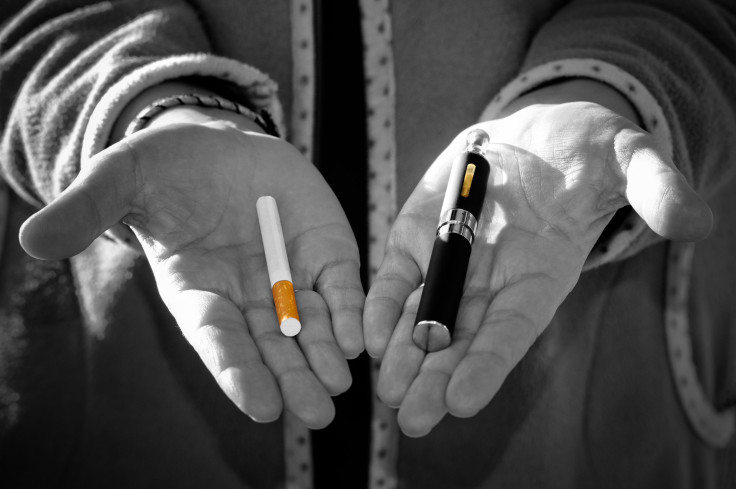E-Cigarette Vapor Particles Are Comparable To Cigarette Smoke, So Are They Really Safer?

Researchers are rapidly trying to find out exactly what electronic cigarette smokers are inhaling, while the Food and Drug Administration plans to impose new regulations. The newest research suggests that the vapor inhaled by electronic cigarette users dispenses deep into their lungs and has the potential to cause or worsen respiratory diseases.
"These small particles have a high surface area-to-volume ratio," said Jonathan Thornburg, lead investigator and a senior research engineer and manager of Aerosol Physics & Exposure at RTI International, a North Carolina research institute. "When they deposit in your lungs, it makes it easy for whatever chemicals are in them to dissolve into your lung tissue."
The tiny particles produced by the vapor are comparable to the smoke that’s produced by a regular cigarette, and 40 percent of the particles can reach the deepest part of the lungs. If the particles floating around in the electronic cigarette vapor prove to be harmful, those who optimistically switched to electronic cigarettes for a safer alternative will be disappointed.
"It's unknown whether these chemicals are harmful if you inhale them," Thornburg said. "A lot of the chemicals are considered safe, but that's from an ingestion perspective, not inhalation," he noted.
Thornburg and his team tested the vapor from the e-cigarettes and used a machine to replicate the experience that a 14-year-old boy would have smoking from the device. They used a tobacco flavor and a fruit punch flavor to measure the particles and found that they were between 184 to 270 nanometers in size, which is in the same range as the ones found in cigarette smoke.
"We certainly don't believe e-cigarettes are a safe alternative," said Dr. Norman Edelman, senior medical advisor for the American Lung Association.
Researchers also measured the depth at which the vapor would travel. They found 47 percent of the vapor was sucked deep enough into the lungs that 40 percent of it reached the deepest segment. What happens to the other 53 percent of it? It is exhaled by the user and creates a potential source of secondhand “smoke” to the surrounding people.
Edelman continued, “The question is whether it's a safer alternative, and we believe those results aren't in yet. This is a tobacco product and should be regulated by the FDA as all tobacco products should." One question that researchers and the FDA need to explore just as much as the electronic cigarette devices themselves: Are the “e-liquids” safe? These liquids are the key ingredients in electronic cigarettes, also known as e-cigarettes. Toxicologists have already warned that the e-liquids may pose a “significant risk to public health.” The New York Times reports that just a teaspoon of the highly diluted e-liquid could be lethal to a small child. This begs the question: How safe is it really in vapor form?
"Everything we found was what the [FDA] and others generally regard as safe," Thornburg said, noting that the cancer-causing agents produced by burning tobacco are not present in e-cigarettes.
According to Thomas Kiklas, CFO of the Tobacco Vapor Electronic Cigarette Association, "All constituents [of e-cigarettes] have been in the U.S. food supply for generations and all are approved by the EPA/FDA for human inhalation and use dermally."
The FDA believes that e-cigarettes have the potential to encourage young people to try other tobacco products, such as the classic smoke-inducing, cancer-causing cigarette. Each day, more than 3,200 children and adolescents age 18 years and younger smoke their first cigarette. Of those, 700 become daily cigarette smokers.
"The e-cig has and is being used by millions of Americans. There have been billions and billions of uses without a single incidence of harm," Kiklas said.
Thornburg told HealthDay that nicotine researchers need to make a collaborative effort to collect what they know of electronic-cigarettes and agree upon a set of research standards. There are so many variables because of the different liquids and devices available that resources need to be pooled in order to understand the short and long-term health implications.
"Each combination could create a unique exposure that could impact the user as well as bystanders," Thornburg said. "With so many different potential combinations, we really need standardized methods for conducting the research with the devices we use and some liquids we use, so all of the research will be comparable."
Just last week, the FDA proposed to expand the tobacco product category in order to include e-cigarettes, which will subject them to regulation.



























